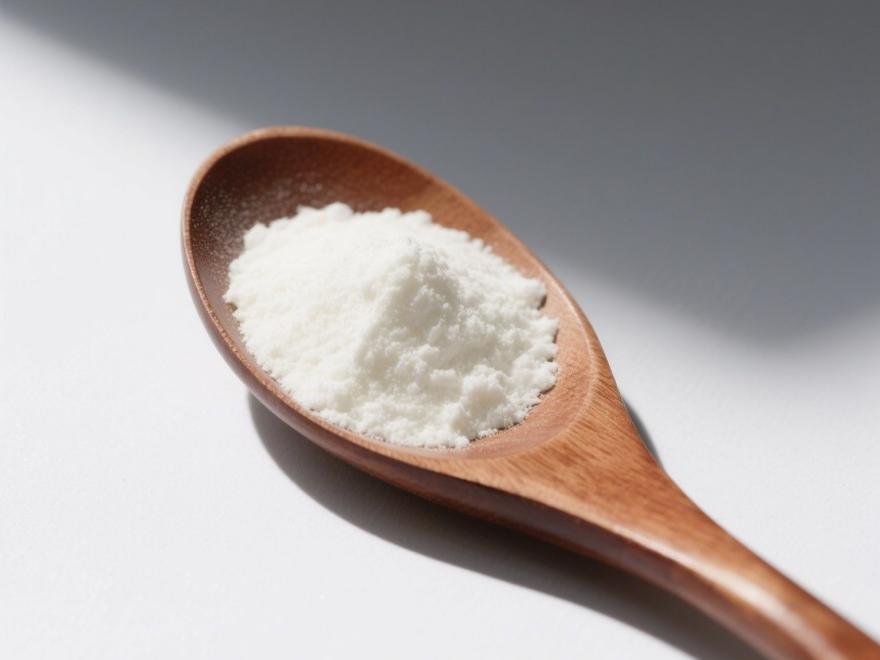What Is Medium Chain Triglyceride Ketogenic Diet?
The classic ketogenic 다이어트 originated in the 1920s, primarily aimed at mimicking the biochemical changes in the body during calorie-restricted diets. It is a high-fat, low-protein, 그리고 low-carbohydrate diet [1]. This high-fat, low-carbohydrate diet significantly reduces blood glucose levels while increasing ketone bodies (acetoacetate, β-hydroxybutyrate, and acetone) and fatty acid levels. Since extrahepatic tissues lack the key enzymes for gluconeogenesis, peripheral tissues and the nervous system must obtain energy through ketone body oxidation, making ketone bodies the primary energy source for the body.
Today, the ketogenic diet has been used in clinical treatment for over 90 years, primarily for the treatment 의 intractable epilepsy [2], with significant efficacy and improved quality of life for patients. In the traditional ketogenic diet, the ratio of fat to protein plus carbohydrates is 4:1. To normalize protein and carbohydrate intake and improve patient compliance, the Ketogenic Diet (KD) has evolved from the classic ketogenic diet (LKD) to the medium-chain triglyceride (MCT)-rich ketogenic diet, the modified Atkins diet (MAD), and the low glycemic index therapeutic ketogenic diet (LGIT) (see Table 1). The medium-chain triglyceride ketogenic diet, due to its easy absorption, rapid energy supply, high ketone production rate, and good taste, has been widely applied in clinical treatment [3].

Clinical studies have found that KD has a protective effect on the nervous system. Under “no sugar” conditions, the body increases the synthesis of gamma-aminobutyric acid (GABA) in the brain, limits the production of reactive oxygen species, and enhances the neuroprotective capacity of neurons [4]. Ketone bodies replace glucose as the primary energy substrate for the central nervous system, providing energy to the brain and reducing energy deficiency caused by 미 토 콘 드리아 damage. Additionally, related studies have confirmed that the ketogenic diet plays an important role in regulating neurotransmitters, neurotrophic factors, inhibiting oxidative stress, and anti-inflammatory effects. These adaptive changes, together with alterations in energy metabolism, jointly regulate neural activity.
1 Metabolism of medium-chain triglycerides
Medium-chain triglycerides (MCT) are broken down into glycerol and medium-chain fatty acids (containing 6–12 carbon atoms) in the stomach and duodenum. Compared to long-chain fatty acids, medium-chain fatty acids have better water solubility and do not require bile for emulsification. For example, decanoic acid (decanoic acid) and caprylic acid (octanoic acid) can directly enter the liver 을 통해 the portal vein through the capillaries of the small intestine and be rapidly metabolized through β-oxidation [6]. MCTs are characterized by small molecular weight, rapid absorption, and quick energy supply. The metabolic products of medium-chain triglycerides, in addition to ketone bodies that can provide energy to the brain, can also directly supply energy to the brain through the medium-chain fatty acids produced during their breakdown. The metabolic process of MCT in the body is shown in Figure 1.
Approximately 50% of fatty acids in plasma can directly cross the blood-brain barrier to provide energy for neurons and glial cells [7, 8]. Medium-chain fatty acids with different carbon chain lengths have varying degrees of metabolic activity. Wlaz P et al. found that in astrocytes, caproic acid is more readily accepted for β-oxidation than decanoic acid and is more likely to produce ketone bodies [9]. Thevenet, J et al. confirmed that decanoic acid preferentially stimulates glycolysis, promoting lactic acid production and supplying energy to the brain. Medium-chain fatty acids can activate the lactate and ketone shuttle system between astrocytes and neurons by regulating astrocyte metabolism, thereby providing energy to neighboring neurons [10].
2 Application of Medium-Chain Triglyceride Ketogenic Diet (MKD) in Neurodegenerative Diseases
2.1 Application of Medium-Chain Triglyceride Ketogenic Diet in Epilepsy
Epilepsy is a chronic neurological disorder characterized by recurrent epileptic seizures caused by abnormal neuronal discharges in the brain. Clinical manifestations include sudden loss of consciousness, limb convulsions, and upward deviation of the eyelids. It is characterized by a long course, high disability rate, and significant physical and psychological burdens on patients, adversely affecting their quality of life.
The primary pathological changes involve instability of membrane potential in brain neurons and a decreased seizure threshold. As early as 1921, the ketogenic diet (KD) was applied to the treatment of epilepsy and demonstrated positive therapeutic effects. In recent years, the Medium Chain Triglyceride Ketogenic Diet has emerged as a new research focus in the treatment of drug-resistant epilepsy. The combination of the Medium Chain Triglyceride Ketogenic Diet with antiepileptic drugs not only reduces the adverse reactions and side effects of the drugs, but also more effectively reduce the frequency and intensity of seizures.
Danielle et al. reported that in a study of 48 children and adolescents with epilepsy and adult epilepsy patients treated with the Medium Chain Triglyceride Ketogenic Diet, follow-up over two years showed that the severity of seizures decreased in most patients [11, 12]. It is evident that the Medium Chain Triglyceride Ketogenic Diet not only reduces the frequency of epileptic seizures but also lowers the severity of seizures. Although ketogenic therapy can reduce seizure frequency and is supported by ample evidence-based medical research, its underlying mechanisms remain unclear. Currently, numerous scholars have explored the mechanisms underlying the efficacy of the Medium Chain Triglyceride Ketogenic Diet in treating epilepsy, proposing various hypotheses. The following aspects represent potential mechanisms through which the metabolic products of the Medium Chain Triglyceride Ketogenic Diet may exert effects on epilepsy.

2.1.1 Mechanisms of action of ketone bodies on epilepsy
(1) Ketone bodies have direct anticonvulsant effects: Acetoacetate and β-hydroxybutyrate can block the formation of glutamate transporter vesicles, inhibiting the transmission of glutamate across synapses, thereby exerting anticonvulsant effects. Huttenlocher, P.R. et al. confirmed through a clinical trial that ketone bodies in plasma have direct anticonvulsant effects [13]. (2) Activation of ATP-sensitive potassium channels through mitochondrial metabolism: The role of ATP-sensitive potassium channels is to reduce action potential frequency, protect neurons, and exert negative feedback regulation. Yellen, G. et al. found that activation of ATP-dependent potassium channels can protect neurons from damage, thereby reducing the damage caused by epileptic seizures to the brain [14].
During ketogenic diet therapy, the inhibition of the glycolytic pathway in animals reduces ATP/ADP levels, thereby opening potassium channels and exerting a neuroprotective effect to prevent epileptic seizures [15]. (3) Direct effects of reduced carbohydrate intake: Glucose transporter (GLUT1) transports glucose from the bloodstream to the brain. When GLUT1 is mutated in patients, it leads to insufficient glucose supply to the brain. The classic ketogenic diet and medium-chain triglyceride ketogenic diet have positive therapeutic effects on patients with GLUT1 mutations, It is believed that ketones replace glucose as an energy source for the brain [16]. In mouse epilepsy models, carbohydrate supplementation reduces the anticonvulsant effects of the ketogenic diet [17], indicating that a high-fat, low-carbohydrate diet plays an important role in controlling seizures.
2.1.2 Direct effects of medium-chain fatty acids on epilepsy
Although ketones have certain anticonvulsant effects, their direct or indirect influence on synaptic transmission and intrinsic neural excitability remains controversial. In a rat epilepsy model established with the gamma-aminobutyric acid receptor antagonist pentylenetetrazole, high ketone concentrations showed weak correlation with seizure frequency [15], Recent studies have found that medium-chain triglycerides (MCTs) produced by the ketogenic diet, such as caprylic acid and capric acid, have a direct effect on controlling epileptic seizures. Wlaz P et al. confirmed that caprylic acid in the MCT ketogenic diet can increase the seizure threshold in the rat cortex and reduce the frequency of epileptic seizures [8]. In animal models of 6 Hz stimulation (a model of drug-resistant epilepsy) and maximal electric shock (a model of tonic-clonic seizures), decanoic acid was found to lower the seizure threshold and exert a direct effect on epilepsy control.
Tan, K. N., et al. reported that in epilepsy patients undergoing MCT intervention, decanoic acid rapidly crosses the blood-brain barrier and reaches sufficient concentrations in the brain to reduce excitability, thereby decreasing seizure frequency [18]. The α-amino-3-hydroxy-5-methyl-4-isoxazole receptor (AMPA) mediates rapid excitatory synaptic transmission in the central nervous system, and its dynamic expression on the postsynaptic membrane is associated with the induction and maintenance of long-term potentiation and long-term depression. Rogawski, M. A. et al. demonstrated that extremely low concentrations of decanoic acid can selectively or directly inhibit AMPA receptors, thereby suppressing excitatory synaptic transmission [19]. Direct inhibition of AMPA receptor activity has been shown to be associated with the treatment of focal epilepsy and generalized tonic-clonic seizures. Some antiepileptic drugs exert their therapeutic effects by inhibiting AMPA receptors, but their target sites differ from those of decanoic acid [19, 20].

2.2 Application of Medium-Chain Triglyceride Ketogenic Diet in Multiple Sclerosis
Multiple sclerosis is a central nervous system (CNS) autoimmune disease characterized by demyelination of the white matter in the brain and spinal cord. MS primarily affects young adults, with a female-to-male incidence ratio of approximately 3:1. Pathological features include CNS demyelination, axonal swelling, inflammatory cell infiltration, and stellate glial scar proliferation, with lesions distributed widely. Clinical manifestations include sensory abnormalities, visual disturbances, muscle weakness, ataxia, and cognitive impairments. Currently, there is no cure for this disease, and medications can only slow its progression. Conventional treatments primarily target: (1) modulation of the immune system to enhance immune regulation; (2) protection of the central nervous system to improve neuronal function and thereby slow disease progression. Research has shown that the onset of MS is associated with mitochondrial dysfunction and inflammation.
William T. Regenold et al. found that the activity of the mitochondrial-independent glucose metabolism pathway in the CNS of MS patients was increased, and these energy metabolism changes may be directly or indirectly related to the pathogenesis of MS progression. Thus, protecting mitochondria or promoting mitochondrial energy metabolism may be beneficial for the treatment of MS [21]. PGC-1α is a transcriptional co-activator of mitochondrial function that regulates energy metabolism. Its expression is significantly reduced in cortical pyramidal neurons of MS patients, leading to insufficient ATP supply [22]. Numerous studies have demonstrated that the Medium Chain Triglyceride Ketogenic Diet plays an important role in improving mitochondrial function and anti-inflammatory effects. Kirk Nylen et al. found that the ketogenic diet enhances mitochondrial function, promotes ATP production, and 개선 ATP supply deficiency caused by PGC-1α deficiency [23].
Increasing evidence suggests that the nucleotide-binding oligomerization domain-like receptor family pyrin domain-containing 3 (NLRP3) inflammasome is abnormally activated in the pathogenesis of MS. NLRP3's primary function is to form the inflammasome and promote the maturation and secretion of IL-1β and IL-1α. Experimental autoimmune encephalomyelitis (EAE) is a common animal model simulating MS. The products of the inflammasome, caspase-1, IL-1β, and IL-18, have been shown to contribute to the development of EAE.

Mice deficient in caspase-1, IL-1β, and IL-18 exhibit resistance to EAE, accompanied by reduced levels of IFN-γ and IL-17. Reports indicate that NLRP3-deficient mice exhibit significantly alleviated EAE symptoms and reduced inflammatory cell infiltration, suggesting that NLRP3 regulates EAE through IL-18. Inoue et al. found that the expression of Caspase-1, IL-1β, and IL-18 was significantly elevated in MS patients, indicating that the NLRP3 inflammasome is associated with MS [24]. Goldberg, E. L., et al. found that β-hydroxybutyrate, a metabolic product of the ketogenic diet, can inhibit the NLRP3 inflammasome and exert anti-inflammatory effects, while MKD, which has a high ketone production rate, can more effectively control the progression of MS [25]. Additionally, medium-chain triglycerides (MCTs) are digested and metabolized at a rate comparable to glucose and produce energy at twice the rate of glucose, thereby improving insufficient brain energy supply in MS patients.
2.3 Application of Medium-Chain Triglyceride Ketogenic Diet in Alzheimer' s 질병
Alzheimer's disease is a common degenerative disease of the central nervous system, characterized by memory impairment, cognitive dysfunction, visuospatial skill deficits, executive dysfunction, and comprehensive dementia manifested by personality and behavioral changes. Major pathological changes include diffuse cortical atrophy, amyloid plaques formed by misfolded β-amyloid (Aβ) proteins, neurofibrillary tangles caused by hyperphosphorylation of tau proteins, and massive neuronal loss.
With the aging population, the incidence of Alzheimer's disease is increasing annually, imposing a significant burden on society and families. Most medications (such as donepezil, rivastigmine, galantamine, and memantine) only provide moderate symptom relief and cannot alter the progression of the disease. Considering the reduced metabolic enzyme activity in some patients with liver damage and the positive effects of MKD on the brain, combined with the various pathological characteristics of Alzheimer's disease, patients are encouraged to prioritize the Medium Chain Triglyceride Ketogenic Diet (MKD) for intervention therapy. The Medium Chain Triglyceride Ketogenic Diet can effectively treat Alzheimer's disease through various mechanisms: (1) MKD enhances mitochondrial energy production; improve glucose metabolism; (2) metabolic byproducts, particularly β-hydroxybutyrate, can prevent β-amyloid toxicity from damaging hippocampal neurons; (3) improve the pathological state of tau protein and β-amyloid.

Glutamate is an excitatory neurotransmitter in the central nervous system. The activation of glutamate receptors and the influx of Ga2+ play a crucial role in the formation, survival, and migration of neurons during brain development, as well as in the formation of synapses. Excessive stimulation of glutamate receptors leads to Ga²⁺ influx and neuronal damage. AMPA receptors are a subtype of glutamate receptors. AMPA receptors mediate rapid excitatory synaptic transmission in the central nervous system, causing massive calcium ion influx and resulting in neurotoxicity [26]. Additionally, AMPA receptors are involved in the abnormal phosphorylation of tau protein, which is associated with the formation of neurofibrillary tangles. Thus, excessive AMPA receptor activity promotes neurotoxicity in AD. Medium-chain triglyceride ketogenic diet metabolites, such as decanoic acid, can inhibit AMPA receptor activity, thereby reducing neurotoxicity and exerting therapeutic effects on AD.
Yoshihiro Kashiwa et al. demonstrated that β-hydroxybutyrate protects hippocampal neurons from β-amyloid toxicity [27]. Miho Ota et al. conducted a study on 20 patients with mild Alzheimer's disease who underwent a Medium Chain Triglyceride Ketogenic Diet for 12 weeks. After the treatment, the patients were administered a digit symbol test and an immediate logical memory test. The results showed that the symptoms of AD patients improved significantly [28]. This indicates that the Medium Chain Triglyceride Ketogenic Diet plays a positive role in improving non-verbal memory in patients with mild AD. Additionally, during MCTKD treatment, AD patients can utilize ketone bodies as an alternative energy source for the brain, thereby reducing amyloid plaque deposition and reversing amyloid toxicity. Increasing evidence suggests that MCTKD may treat Alzheimer's disease through multiple metabolic mechanisms, such as reducing neuroinflammation and enhancing mitochondrial function to improve metabolism, warranting further clinical research.
2.4 Application of the Medium-Chain Triglyceride Ketogenic Diet in Parkinson' s 질병
Parkinson's disease is a common neurodegenerative disorder of the central nervous system in the elderly, characterized by symptoms such as visual impairment, chronic constipation, sleep disorders, mood disturbances, pain, fatigue, bradykinesia, resting tremor, muscle rigidity, and postural gait abnormalities [29]. The degeneration, death, or loss of dopaminergic neurons in the substantia nigra of the midbrain is the primary pathological change. With the aging of the population, the incidence of Parkinson's disease is on the rise. Recent clinical studies have found that a high-fat diet may reduce the risk of developing Parkinson's disease. Vanltallie et al. demonstrated in a clinical trial that after four weeks of a ketogenic diet, all participants experienced improvements in fatigue, gait, and balance disorders [30].
A widely used animal model for Parkinson's disease is the neurotoxin 1-methyl-4-phenyl-1,2,3,6-tetrahydropyridine (MPTP). MPTP induces degenerative changes in dopamine neurons, resulting in symptoms and pathological changes similar to those observed in Parkinson's disease. Kim Tieu et al. established a mouse model of Parkinson's disease using MPTP and found that β-hydroxybutyrate produced by ketogenic diet metabolism could protect neurons, reduce MPTP-induced degenerative changes in dopamine neurons, and improve motor dysfunction in Parkinson's disease [31].

CHENG B et al. observed in a mouse MPTP model that the ketogenic diet group exhibited reduced extracellular glutamate levels and increased striatal glutamate levels compared to other groups, which may be associated with enhanced activity of the thalamus-cortex-striatum pathway [32]. Ilona Joniec-Maciejak et al. found in an MPTP-induced mouse PD model that supplementation with butyric acid increased the expression of peroxisome proliferator-activated receptor gamma coactivator-1α (PGC-1α), thereby significantly improving dopamine neurotransmission in the striatum [33]. Another study showed that in a Parkinson's disease model established using the neurotoxic compound 6-hydroxydopamine, a medium-chain triglyceride ketogenic diet increased glutathione levels in the substantia nigra and striatum, enhanced mitochondrial antioxidant capacity, prevented oxidative damage to mitochondrial DNA, and protected dopamine neurons from the effects of 6-hydroxydopamine [34].
Research has found that the progression of PD is associated with inflammation, and PD patients exhibit a large number of activated microglia in the substantia nigra. Activated microglia can release various inflammatory factors, such as IL-1, IL-6, TNF-α, interferon (IFN)-γ, macrophage colony-stimulating factor, and chemokines, which can enhance glutamatergic neuronal transmission, causing significant excitotoxic effects on the central nervous system. The anti-inflammatory effects of the Medium Chain Triglyceride Ketogenic Diet may act through mechanisms such as reducing NF-κB expression levels, inhibiting interleukin synthesis, suppressing the activity of inducible nitric oxide synthase (iNOS), and inhibiting glutamate excitatory synaptic transmission, thereby exerting therapeutic effects on PD.
2.5 Application of the Medium Chain Triglyceride Ketogenic Diet in Huntington' s 질병
Huntington's disease, also known as chronic progressive chorea, primarily affects middle-aged and elderly individuals, with an insidious onset and slow progression. Its pathological features include degeneration of the basal ganglia and cerebral cortex, and neuronal death. Clinical symptoms primarily include choreiform involuntary movements, psychiatric disorders, and progressive dementia. Non-pharmacological dietary therapy—the Medium Chain Triglyceride Ketogenic Diet—can improve mitochondrial damage by using ketone bodies as an energy source, thereby slowing disease progression.

HD shares similarities with other neurodegenerative diseases, being associated with mitochondrial damage and energy metabolism defects [35]. Marta Balietti et al. found that after 8 weeks of Medium Chain Triglyceride Ketogenic Diet intervention in Huntington's disease mice, the activity of mitochondrial succinate dehydrogenase was higher than in the control group, indicating that MKD can improve mitochondrial dysfunction and exert neuroprotective effects [36]. In HD cell models, it was found that insulin and IGF-1 activate AKT, thereby improving cellular mitochondrial function and inhibiting cell apoptosis [37]. David N. Ruskin et al. found in a Huntington's disease transgenic mouse model (R6/21J) that a ketogenic diet slowed weight loss in transgenic Huntington's disease mice and enhanced their motor and coordination abilities [38]. In summary, ketogenic diet therapy can improve mitochondrial damage in HD model groups and enhance energy metabolism in the body.
결론 및 전망 3
The medium-chain triglyceride ketogenic diet demonstrates therapeutic efficacy for various neurodegenerative diseases, significantly improving patients' clinical symptoms and social behavior. Compared to medications, it is safer with no toxic side effects, offering broad prospects for future development. Compared with other types of ketogenic diets, the medium-chain triglyceride ketogenic diet not only has a higher ketone production rate but also metabolizes medium-chain fatty acids that can directly supply energy to the brain, more effectively reducing brain metabolic disorders caused by energy deficiency.

The Medium Chain Triglyceride Ketogenic Diet alters traditional dietary structures, with fatty acids becoming the primary energy source. Therefore, long-term consumption of a ketogenic diet may lead to gastrointestinal discomfort, progressive bone calcium loss, and reduced bone density [39]. During the early stages of KD therapy, medical supervision is required to objectively assess patients' gastrointestinal function and monitor uric acid levels, electrolytes, and micronutrients [40].
Currently, although the mechanism of action of the Medium Chain Triglyceride Ketogenic Diet remains unclear, it may exert its effects by influencing neuronal energy metabolism, enhancing mitochondrial function, improving antioxidant stress, and reducing inflammation, thereby enhancing protection of the nervous system. Neurological disorders are multifactorial in nature, and the Medium Chain Triglyceride Ketogenic Diet may exert its effects through multiple mechanisms, thereby improving patients' quality of life. The Medium Chain Triglyceride Ketogenic Diet holds significant potential and warrants further exploration.
참조
[1]Mahdi H O M,Lauritzen K H,Mohammad 한, et al .A ketogenic diet improves mitochondrial biogenesis and bioenergetics via the PGC1α-SIRT3-UCP2 axis[J].Neurochemical Research,2019 ,44 (1 ) : 22 -37 .
[2]Guzel O,Uysal U,Arslan N .Efficacy and tolerability of olive oil -based ketogenic diet in children with drug -resistant epilepsy:a single center experience[J].European Journal of Paediat ric Neurology,2019 , 23 (1 ) : 143 -151 .
[3] Sun Jing, Ma Jing. Effects of medium-chain triglycerides on lipid metabolism and their mechanisms: a review of recent studies [J]. Foreign Medicine (Health Science Edition), 2006, 33 (3): 146-150.
[4]Kossoff E H,T urner Z,Bluml R M,et al .A randomized,crossover comparison of daily carbohydrate limits using the modified Atkins diet[J].Epilepsy & Behavior,2007 , 10 (3 ) : 432-436 .
[5] Lu Yunxin, Shi Hanping. Ketogenic diet and tumor treatment [J]. Journal of Tumor Metabolism and Nutrition, 2015 (1): 61-66.
[6]Kaye Fosterpowell,Susanna H a Holt,Janette C Br .Special article International table of gly cemic index and glycemic load[J].The A mer - ican Journal of Clinical Nutrition,2002 , 76 (1) : 5 -56 .
[7]Schoenfeld P,Wojtczak L .Short- and medium-chain fatty acids in the energy metabolism-the cellular perspective[J].Journal of Lipid Research,2016 , 57 (6 ) : 943 -54 .
[8]Piotr Wla , Katarzyna Socala,Nieoczy m D, et al .Anticonvulsant profile of caprylic acid,a main constituent of the medium-chain triglyc - eride(MCT )ketogenic diet,in mice[J].Neuro pharmacology,2012 , 62 (4 ) : 1882-1889 .
[9]Wlaz P,Socala K,Nieoczy m D,et al .Acute anticonvulsant effects of capric acid in seizure tests in mice[J].Progress in Neuro-Psycho - pharmacology and Biological Psychiatry,2015 , 57 : 110 -116 .
[10]Thevenet J,De Marchi U,Domingo J S,et al .Medium-chain fatty acids inhibit mitochondrial metabolism in astrocytes promoting astro - cyte-neuron lactate and ketone body shuttle systems[J].The FASEB Journal,2016 , 30 (5 ) : 1913 -26 .
[11]Dienel,Gerald A .Brain lactate metabolism:the discoveries and the controversies [J].Journal of Cerebral Blood Flow & 신진대사,
[12]Danielle A J E,Lam brecht s Reina J A,de Kinderen Hans S H,et al .The M CT-ketogenic diet as a treatment option in refractory childhood epilepsy:A prospective study with 2 -year follow-up[J].Epilepsy & Behavior,2015 , 51 : 261 -266 .
[13]Huttenlocher,Peter R .Ketonemia and Seizures:Metabolic and anticonvulsant effects of tw o ketogenic diets in childhood epilepsy[J].Pe- diatric Research,1976 , 10 (5 ) : 536 -540 .
[14]Yellen G .Ketone bodies,glycolysis,and KATP channels in the mechanism of the ketogenic diet[J].Epilepsia,2008 , 49 Suppl 8(s8) : 80 -82 .
[15]Masino S A,Li T,Theofilas P,et al.A ketogenic diet suppresses seizures in mice through adenosine A 1 receptors[J].Journal of Clinical Investigation,2011 , 121 (7 ) : 2679 .
[16]Kass H R,Winesett S P,Bessone S K,et al.U se of dietary therapies amongst patients with GLUT 1 deficiency syndrome[J].Seizure, 2016 , 35 : 83 -87 .
[17]Mantis J G,Meidenbauer J J,Zimick N C,et al .Glucose reduces the anticonvulsant effects of the ketogenic diet in EL mice[J].Epilepsy Research,2014 , 108 (7 ) : 1137 -1144 .
[18]T an K N,Carrasco-Pozo C,Mcdonald T S,et al .Tridecanoin is anticonvulsant,antioxidant,and improves mitochondrial function[J]. Journal of Cerebral Blood Flow & Metabolism,2016 , 37 (6 ) : 2035 -2048 .
[19]Rog awski M A .Revisiting A MPA receptors as an antiepileptic drug target[J].Epilepsy Currents,2011 , 11 (2 ) , 56 -63 .
[20]Löscher W .Critical review of current animal models of seizures and epilepsy used in the discovery and development of new antiepileptic drugs[J].Seizure European Journal of Epilepsy,2011 , 20 (5 ) : 359 -368 .
[21]Regenold W T,Phatak P,Makley M J,et al .Cerebrospinal fluid evidence of increased extra-mitochondrial glucose metabolism implicates mitochondrial dysfunction in multiple sclerosis disease progression[J].Journal of the Neurological Sciences,2008 , 275 (1 -2 ) : 106 -112 .
[22]Witte M E,Nijland P G,Drexhage J A R,et al .Reduced expression of PGC-1α partly underlies mitochondrial changes and correlates with neuronal loss in multiple sclerosis cortex[J].Acta N europathologica,2013 , 125 (2 ) : 231 -243 .
[23]Nylen K,Velazquez J L P,Sayed V,et al .The effects of a ketogenic diet on ATP concentrations and the number of hippocampal mito - cho ndria in Aldh5a1 -/- mice[J].Biochimica Et Bio physica Acta General Subjects,2009 , 1790 (3 ) : 208-212 .
[24]Inoue M,Williams K L,Gunn M D,et al.NLRP3 inflammasome induces chemo tactic immune cell migration to the CNS in experimental autoimmune encephalo my elitis[J].Proceedings of the National Academy of Sciences,2012 , 109 (26 ) : 10480-10485 .
[25]Goldberg E L,Asher J L,Molony R D,et al . β-Hydroxybuty rate deactivates neutro phil NLRP3 inflammasome to relieve gout flares[J]. 셀 Reports,2017 , 18 (9 ) : 2077 -2087 .
[26]Banke T G,Bowie D,Lee H K,et al .Control of GluR1 A MPA receptor function by cAMP-dependent protein kinase[J].The Journal of Neuroscience:The Official Journal of the Society for Neuroscience,2000 , 20 (1 ) : 89 -102 .
[27]Kashiwaya Y,Takeshima T,Mori N,et al.D-beta -Hydroxybuty rate protects neurons in models of Alzheimer"s and Parkinson"s disease [J].Proceedings of the National Academy of Sciences,2000 , 97 (10 ) : 5440 -5444 .
[28]Ota M,M atsuo J,Ishida I,et al .Effects of a medium-chain triglyceride-based ketogenic formula on cognitive function in patients with mild-to-moderate Alzheimer's disease[J].Neuroscience Letters,2019 , 690 : 232 -236 .
[29] Li Shuhua, Chen Haibo. Advances in the study of non-motor symptoms of Parkinson's disease and their clinical significance [J]. Chinese Journal of Neurology, 2017, 50 (1): 71-74.
[30]Vanitallie T B,Nonas C,Rocco A D,et al.Treatment of parkinson disease with diet-induced hyperketonemia:a feasibility study[J]. Dkg est of the World Latest Medical Information,2005 , 64 (4 ) : 728-730 .
[31]Kim T,Celine P,Casper C,et al .D-beta-hydroxybuty rate rescues mitochondrial respiration and mitigates features of Parkinson disease [J].Journal of Clinical Investigation,2003 , 112 (6 ) : 892 -901 .
[32]Cheng B,Yang X,An L,et al .Ketogenic diet protects dopaminergic neurons against 6 -OHDA neuro toxicity via up-regulating glutathi - one in a rat model of Parkinson"s disease[J].Brain Research,2009 , 1286(none):25 -31 .
[33]Joniec-Maciejak I,Waw er A,T urzy ńska,Danuta,et al.Octanoic acid prevents reduction of striatal dopamine in the MPTP mouse model of Parkinson\"s disease[J].Pharm acological Reports,2018 , 70 (5 ) : 988 -992 .
[34]Smith E S,Clark M E,Hardy G A,et al .Daily consumption of methylene blue reduces attentional deficits and dopamine reduction in a 6 -OHDA model of Parkinson's disease[J].Neuroscience,2017 , 359 : 8-16 .
[35]Koro shetz W J,Jenkins B G,Rosen B R,et al .Energy metabolism defects in Huntington\"s disease and effects of coenzyme Q10[J]. 1997 , 41 (2) : 160-165 .
[36]Balietti M,Giorgetti B,Stefano G D,et al.A ketogenic diet increases succinic dehydrogenase(SDH)activity and recovers age-related decrease in numeric density of SDH-positive mitochondria in cerebellar Purkinje cells of late-adult rats[J].Micron,2010 , 41 (2 ) : 143 - 148 .
[37] Fang, Fang. “Longan polysaccharides reduce the cytotoxicity of mutant huntingtin protein by increasing AKT activity.” [Doctoral dissertation]. Wuhan: Huazhong University of Science and Technology, 2016.
[38]Ruskin D N,Ross J L,Kaw amura M,et al.A ketogenic diet delays weight loss and does not impair working memory or motor function in the R6 /2 1J mouse model of Huntington"s disease[J].Physiology & Behavior,2011 , 103 (5 ) : 501 -507 .
[39]Bertoli S,Trentani C,Ferraris C,et al .Long-term effects of a ketogenic diet on body composition and bone mineralization in GLUT -1deficiency syndrome:a case series[J].Nutrition,2014 , 30 (6 ) : 726 -728 .
[40] Bai Shiying, Ma Yanhong. Efficacy and adverse reactions of ketogenic diet in the treatment of refractory epilepsy in children [J]. Journal of Clinical Pediatrics, 2015, 33(10): 900-902.
-
Prev
What Is a Medium-Chain Triglyceride Diet?
-
다음
What Are the Uses of Medium Chain Triglycerides(MCT) in the Food Field?


 영어
영어 프랑스
프랑스 스페인
스페인 러시아
러시아 한국
한국 일본
일본




